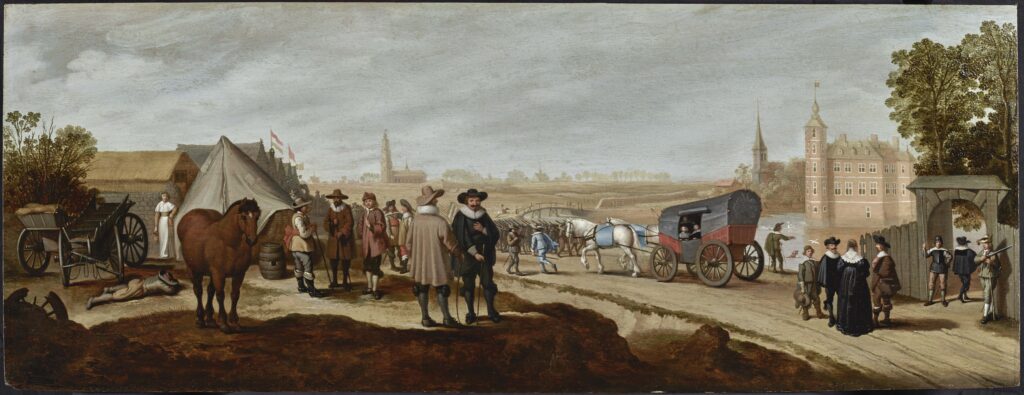Dutch School c.1640
Elegant Figures before a Military Encampment by Bouvigne Castle outside Ginneken; the Church of de Groote of Onze Liewe Church in the Distance

Essay:
The setting for this fascinating encampment scene is Bouvigne Castle just outside the village of Ginneken. On the horizon is Breda marked out by the Grote Kerk. Bouvigne Castle (then Boeverijen Castle) served as the head-quarters for Prince Frederick Henry of Orange in 1637 during his unsuccessful campaign to liberate the area from Spanish dominion. The area had been controlled by the Spanish following Philip IV's Siege of Breda (1624-25). It was only in 1648 that Breda was finally ceded to the Dutch Republic as part of the Treaty of Westphalia.
Stylistically the artwork can be dated to around 1640. The soldiers in the scene - clearly Dutchmen - could indicate that the work was painted around the same time as the Prince of Orange's campaign. A patriotic theme is evident. The painting is clearly a celebration of Dutch military organisation and commitment to the cause for independence.
In subject matter and, arguably, also in style, our work brings to mind Gerard ter Borch the Younger's account from 1646 of Adrian Pauw's arrival in Münster for the peace negotiations that led to the Treaties of Münster being signed in 1648, thus ending the 30-years' war.
Shown in our encampment scene are predominantly infantry companies of arquebusiers with pikemen behind them. An elegant carriage drives past and burghers
Provenance:
Private collection, UK